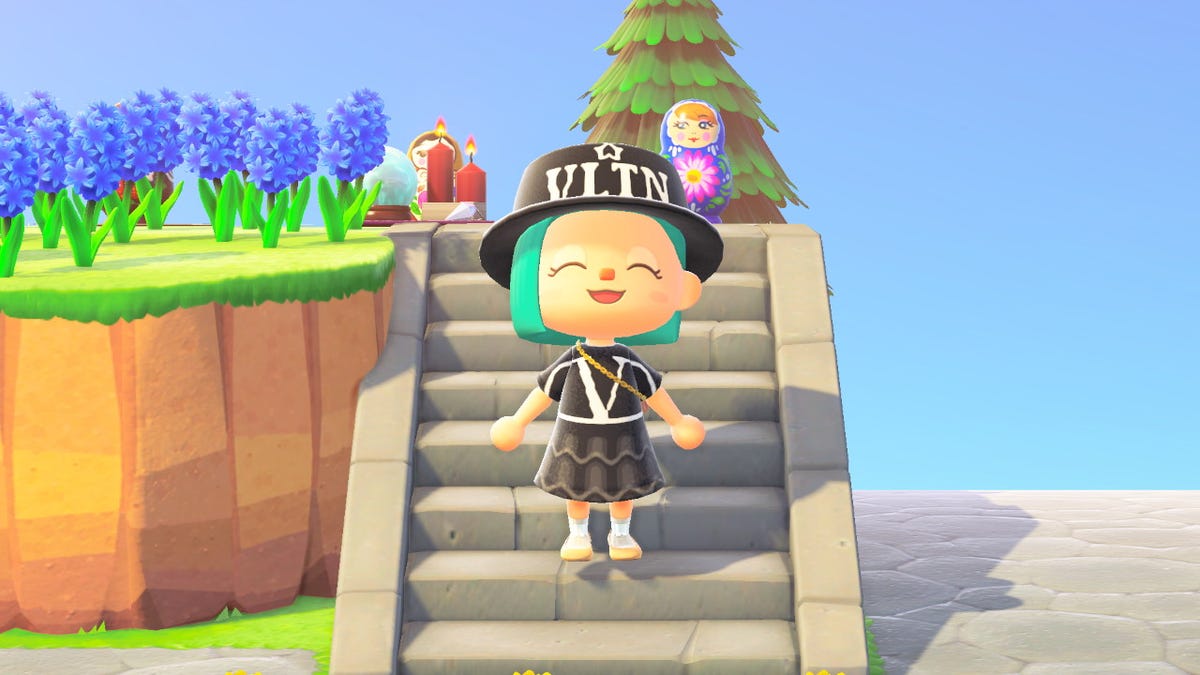I have always had a special fascination for feudal Japan and samurai, and I have not been the only one: around these exceptional warriors guided by the warrior's path (bushido) superb literary works, cult films and playable experiences have been created that, through their own narrative tools, have sought to reflect and transmit their customs, their philosophy and their codes of honor and loyalty. And, of course, its sensational duels with katanas.
Since The book of the five rings from Miyamoto Musashi to The seven samurai Akira Kurosawa, passing by Star wars -at least, the classic ones- and video games that go from the classic Sword of the Samurai to recent Katana ZERO.
Even Nintendo itself He was inspired in samurai duels to secure the transgressive sword fights of The Legend of Zelda: Ocarina of Time. After all, the Toei thematic studies, with areas inspired by medieval JapanHe was a stone's throw from his offices.
Because the essence of samurai-style sword fighting is manifested in its own way in games as varied as No More Heroes, duels with a certain historical character of For Honor or through from the recent legacy of From Software, always being diluted in modern influences that help give it a idealized cape of romanticism to stages in the history of Japan that came to be plagued by cruelty.
You were where honor and loyalty were everything.
At iGamesNews we have talked about the era of the vikingsof the fascinating Wild Westthe rich Norse mythology and even the legacy from which the video games of Marvel and Star wars. Now we want to tackle a topic as fascinating as all the previous ones: the legacy of samurai in video games.
Samurai of the Sengoku Period and the Meiji Restoration

As I commented at the beginning, Feudal Japan is a spectacular setting to develop stories as powerful in themes as they are captivating in the environment. Enough to match great feats that we have experienced on consoles and PCs and, in turn, transmit unique feelings to the player.
In fact, it has such a wide folklore and so deep-rooted legends that it is even possible to compete with the most fascinating mythologies and leave a special mark. For example, the fantastic Okami. Although, of course, in the subject that concerns us, we are going to focus on what is probably the most fascinating figure associated with the Japanese medieval period: lLoyal samurai.
The origin of samurai as a social and military class obeys different causes. Possibly the most accentuated of them all is the centralization of the archipelago's power in Heian-kyō (current Kyoto) around the year 794, generating in the process a kind of chaos at the national level and, consequently, all kinds of agitations, discomforts and disturbances of public order.

Thus, as mediators and visible authority, the figure of the samurai would appear, a noble class at the absolute service of the daimyo (the great feudal landowners) whose loyalty was as strong as the high prestige they held among the people. In exchange for their reputation, which must be faultless, they were especially well paid and even had special privileges, such as being able to carry two katanas.
Approximately three centuries later, Minamoto no Yoritomo, who descended from the lineage of the emperors, would end up being the supreme authority of all the military forces of Feudal Japan, establishing the first of the three shogunates (bakufu), that is, the model of military rule of Japan that would be maintained for the next 700 years.
Which leaves us with a very long period of activity in which these warriors of honor in the service of the shogunate were the greatest exponent and authority of Japan during the times of prosperity and peace, as well as the real protagonists of the darkest stages. And of the latter there was an outrage.
On the contrary, his mistakes or the fall of his lords resulted in the maximum dishonor and the price to pay was his own life.

With the foregoing established, it is worth noting two exceptional times that have been the most recurrent and portrayed when recreating the times of samurai: the Sengoku period and the Meiji Restoration.
The Ōnin rebellion, started in the second half of XIV century following the election of the next shogun, it ended up leading to a conflict between the Ashikaga shogunate and the most powerful daimyos, which was succeeded by a very long war period known as Sengoku jidai -that is, the era of the combatant states- in which several clans fought for the domination of Japan for over a hundred years.

Already entered the XVII century, the savage Sengoku period and its long succession of civil wars would give way to the Edo period, a calmer time when Japan could afford to look beyond its shores (or, at least, beyond China, Korea and Russia) to discover that the world was a very different place. As much as to understand that it was necessary to adopt a series of radical changes at the structural level within society, the BakumatsuWhich, logically, did not equally convince all the privileged classes.
Thus, after a series of wars, Japan will begin a modernization process known as the Meiji Restoration, ending the feudal system of the country and, by extension, with samurai and their exceptional privileges. In return, Japan would not only integrate into the modern world, but would play a bigger role. Retaining, then and now, a special weight for traditions and its rich legacy.
The legacy of the wandering samurai

For all of the above, most Samurai games transport us to the Sengoku, Bakumatsu or the Meiji Restoration, although it would be unfair to say that only those scenarios have been presented to us: in addition to the rich history of Japan, there has always been to imagine futuristic or fantasy environments in which these noble warriors have the opportunity to demonstrate their technique and the firm conviction in the way of the samurai.
So, Is there a common denominator? There are a lot, but one of them has a special weight: the brand new chambara fighting, the duels with swords in which the technique, the reflexes and the determination added to the quality of the metal that is carried between the hands determines the resolution of each combat.
As a general rule, resulting in a single standing swordsman and another about to bend the knees for the last time.

It is worth considering that we include not only samurai in this section, but also the ronin, a kind of wandering warriors without a lord to serve who, as a general rule, were not well regarded by society. Sometimes for being mere tramps, even criminals or mercenaries who unsheathed their weapons for a price. This does not mean that many of them seek redemption or yearn to put themselves at the service of a daimyo (something very exceptional).
The reason for the above is quite simple: as is implied in its own name, the reason for samurai existence is to serve their feudal lords. However, they were also referred to each other as bushi (warriors) as they were instructed and prepared for war and bushido: the set of ideals, moral values and philosophies associated with the warrior's own path.

And it is not for less, the current Japanese martial arts that are practiced today with a sporting or competitive character have their origin in Bushido. And, in turn, the riding or handling of the bow and other weapons is very closely related to this. But there are very few things that reflect the essence of samurai as well as the very domain of the sword.
After all, Miyamoto Musashi, the left-handed Samurai, is possibly the best-known swordsman in Japan (and beyond the Japanese country) and the one who best personifies the ideals and legends that samurai emanate

Because the idealized vision of the life of Miyamoto Musashi It has inspired and served as a mold for most samurai video games and even fighting game protagonists. How many stories created in Japan present us with a wandering warrior who dedicates his life to traveling in search of worthy opponents and powerful rivals?
Thus, the key is in how to translate the intensity and the sense of skill and mastery of sword fighting to video games. And, of course, a lot has rained since the classic Samurai that we got to see at arcade back in 1980.
From action to strategy to fighting: the evolution of Samurai games
One of the first games based on samurai was the referred Samurai from SEGA for arcade games, and the truth is that little could be asked of that game: we would find a swordsman who must dispatch countless enemies by crossing them with the edge of his sword, dodging traps and, finally, facing other samurai in equal measure. terms.
More ambitious in all respects was the Nobunaga's Ambition original Koei for multiple platforms, offering players the possibility of approaching the Sengoku period in a strategic way. And he was not the only one: Shingen the Ruler Another Ltd. also accommodated the battles of these warriors to the formula of tactics.
After several classic action titles in scroll sidehe like Getsu Fuuma Den or Samurai Warrior: The battles of Usagi Yojimbo we would find in 1989 a more ambitious approach to the concept of sword duels and historical battles with Sword of the Samuraiby MicroProse.
It was a matter of time that the fighting claimed in all the prominence of the gaming experience, and SNK and its Samurai Shodown they took a spectacular initiative that knew how to stand out very well from the slipstream of Street Fighter II, strengthening the rhythm and intensity of the chambara fights -even the disarmaments- without renouncing the fantasy movements, gaining more and more character with each new installment.
Little by little, the chambara matches were gaining interest. Bushido Blade or Soul Blade and its sequels will find a way to give them depth through fighters made through polygonal models, but also by adding tactical elements such as side steps or tactical counterattacks.
Released for PlayStation in 1999, Soul of the Samurai It was a further step in allowing us to relive the intensity of Feudal Japan's most delicate periods in terms of action, being surpassed on its own terrain, already after the turn of the millennium and in 128-bit systems by Way of the Samurai.
In 2000 we received a huge surprise: Creative Assembly was crowned with Shogun: Total War
Of course, the legacy of samurai in strategy video games has been especially varied: we were able to act as feudal lords and great generals in games like Battle realms through the real-time strategy, Age of Empires II: The Age of Kings it also gained special weight for those passionate about the genre and, more recently, Shadow Tactics: Blade of Shogun It showed that turn-based fighting also feels great to feudal Japan.
But before advancing so much in time it is necessary to make a very special mention: on PS2 the saga would see the light Onimusha Capcom, an adventure tinged with Survival horror and an emphasis on fantasy whose game mechanics and storylines reflected the age of samurai with cutting-edge technology.
And they were not the only ones: Kengo: The Legend of the 9 and Genji: Days of the Blade They also wanted to convey the charm and cruelty of that time. However, the most acclaimed format would be the one adopted by the series Samurai Warriors and Sengoku Basara of Koei and Capcom respectively, allowing us to fight against legions of enemies to the rhythm of hack’n slash. In both cases, sagas considered cult in Japan.
We are approaching our days and, while we agree that the Soulsborne formula from From Software marry wonderfully with the experience of samurai, their approach to the wars of medieval Japan -with touches of fantasy- through Sekiro: Shadows Die Twice He marries much more with the concept of ninjas (shinobis) than that of samurai. All in all, Team Ninja found an exquisite middle ground with Nioh and its sequel, fulfilling our desire to fight with katana, spear and armor.
Our review of the evolution of samurai in video games would be incomplete if we did not highlight at least a couple of indie experiences, and if One Strike reflects the harshness of duels that are resolved with a cut -or two- the truth is that the attractiveness of Katana ZERO causes us to forgive you for all licenses taken in favor of that action in side scroll so lethal and fun.
The future of samurai games Is it possible to achieve the ultimate samurai experience?
I take it for granted that we will continue to see games starring samurai or set in the Sengoku or the most turbulent periods of feudal Japan in the future. After all, is a recurring theme who occasionally emerges as a minor character in an RPG game, a passionate character who feels especially attached to Japan in fighting games or as an example of general in strategy games, such as the saga Civilization.
Don't get me wrong: I enjoy all the experiences in which I am forced to use the sword with precision and technique, but also the strategy games in which the setting is taken advantage of to bring real news to the player.
In the end, if we put them together we are close to obtaining a complete experience based on the times of the samurai. At the level of Red dead redemption with the Wild West or A plague Tale: Innocence and Kingdom Come: Deliverance with the medieval? Well, personally, I have strong hopes for the new ones. Sucker Punch.
Ghost of Tsushima It is not, far from it, the game that has raised the most expectations in 2020, but at least it promises to offer a faithful experience at that time that has been so well rooted in consoles and PCs and, at the same time, bet on delving into a story not so well known to the western public. A promising way to tackle Bushido.
It remains to be seen if it will meet expectations, and go to slipstream of The Last of Us II It is not easy, but at least it is clear that there is an ambition and an interest to transfer the period that inspired Akira Kurosawa, George Lucas or Sergio Leone to this day.
The ultimate fantasy of those of us who have read at least once The Book of the Five Rings and of all those who, to a greater or lesser extent, believe that the legacy of Miyamoto Musashi deserves to be portrayed in style in video games. Especially, that which surrounds and gives meaning to the duels with swords.
Table of Contents









